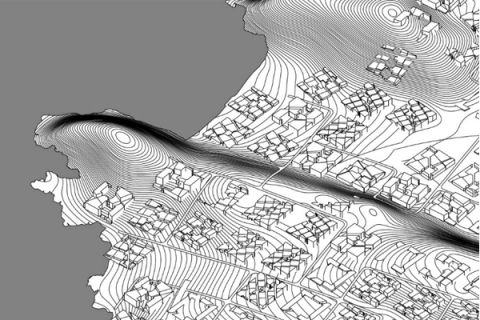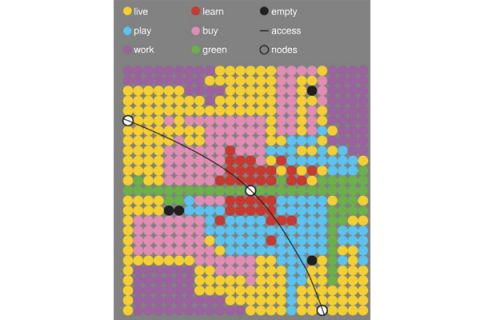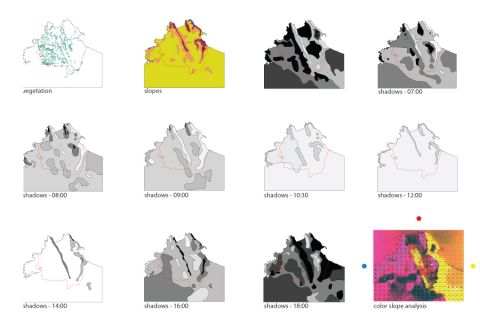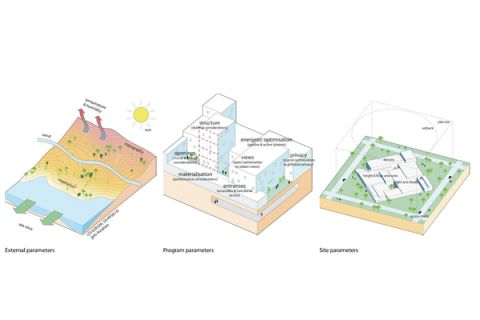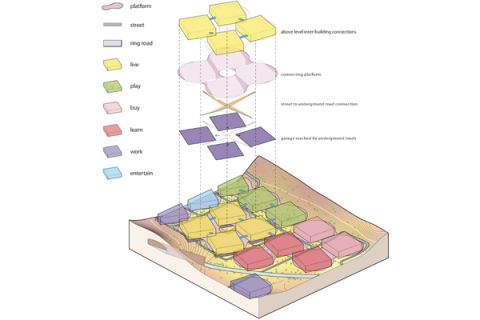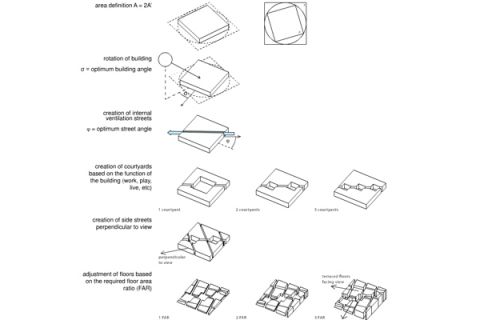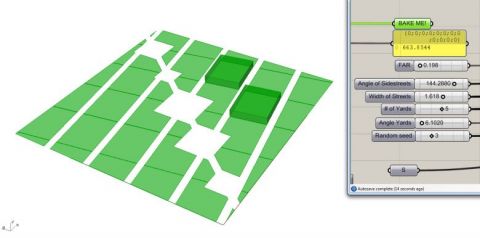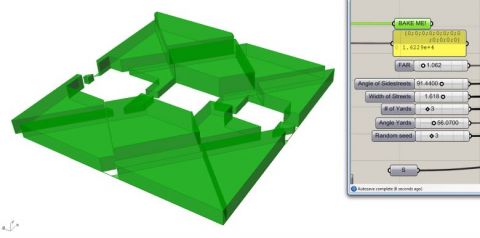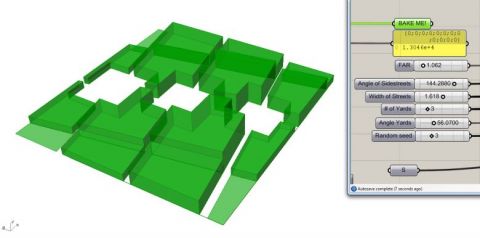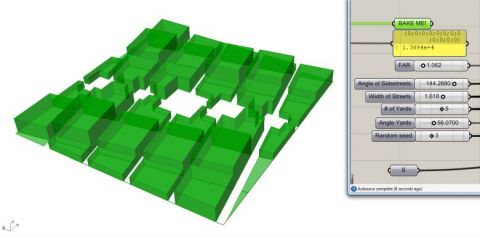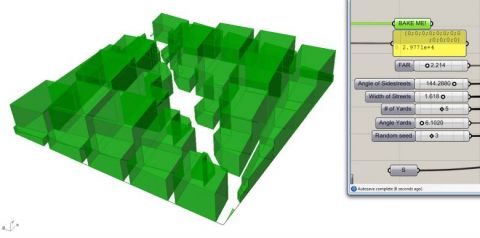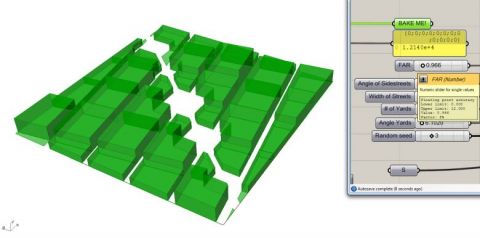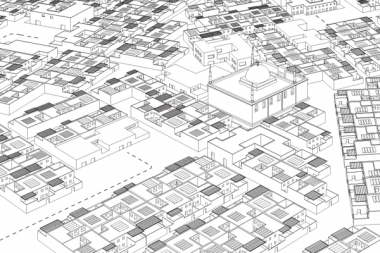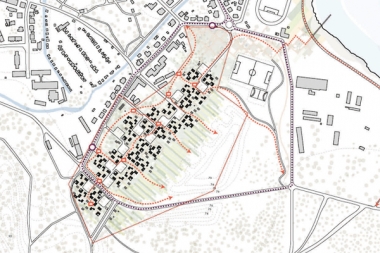- AURELVR
- DESIGN
- RESEARCH
- TEACHING
Parametric Urban Design Model / Qurm
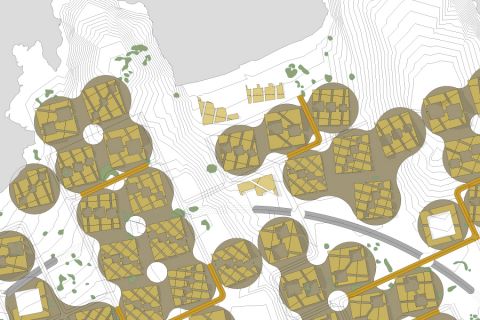
The Petrol Development Oman (PDO) camp in Qurm, Muscat Capital Area, was built in the 1970s and is prone to redevelopment. In the larger context of urbanization processes of Muscat Capital Area it serves as a testing ground. A mechanism for dynamic program distribution, participatory land allocation, climate responsive urban design is implemented by means of a parametric urban design model.
Sustainability – as defined by the UN millennium goals – needs to address multiple dimensions simultaneously: economical, ecological, social and cultural aspects of sustainability. Therefore the case study of the PDO camp bases its economical viability on the integration of ecological, social and cultural parameters particular to the site, climate and culture of Oman. Mapping methods trace environmental, cultural and programmatic parameters and feed them into a cohesive urban design mechanism. The developed tools interpret environmental data to generate urban design according to rules governed by climatic fitness criteria. The software prototype optimizes the climatic performance of the building envelope, distribution of program, accessibility within the plot and land-use and, as a result, produces a coherent urban design that is considerably more sustainable than the “cooky-cutter” patterns of most developments in the Gulf. This mechanism – developed for the site in Qurm – can be adapted and applied to any site in Oman or the Gulf region from the scale of a few houses to larger mixed use developments.
Institution: aurel VR
with Carlos Ramos da Silva and Sergei Mikhailenko
